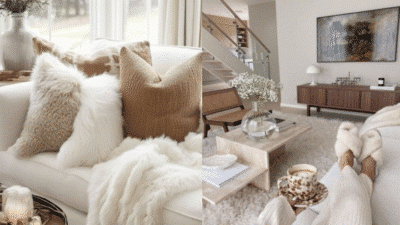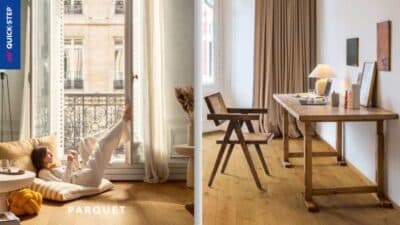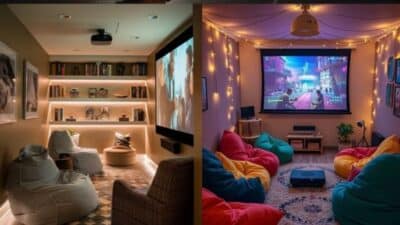A perfect home library balances design and function to create a space that invites reading and relaxation. It’s not just about lining up books on shelves; it’s about making a cozy and practical spot that feels personal and easy to use.
The secret to an ideal home library lies in smart storage, comfortable seating, and good lighting, all working together to support long, enjoyable reading sessions. Thoughtful details like a small table or ottoman add extra comfort and convenience without crowding the room.
Whether a large room or a small corner, a home library can be transformed into a peaceful retreat with the right mix of style and utility. This makes it a spot where anyone can unwind and dive into their favorite books.
Foundations of a Perfect Home Library
A great home library starts with clear planning about what it should do and where it should go. Making smart choices about space and layout helps create a comfortable, functional place to enjoy reading and organizing books. Details like lighting, seating, and storage all work together to build the right atmosphere.
Defining Your Library’s Purpose
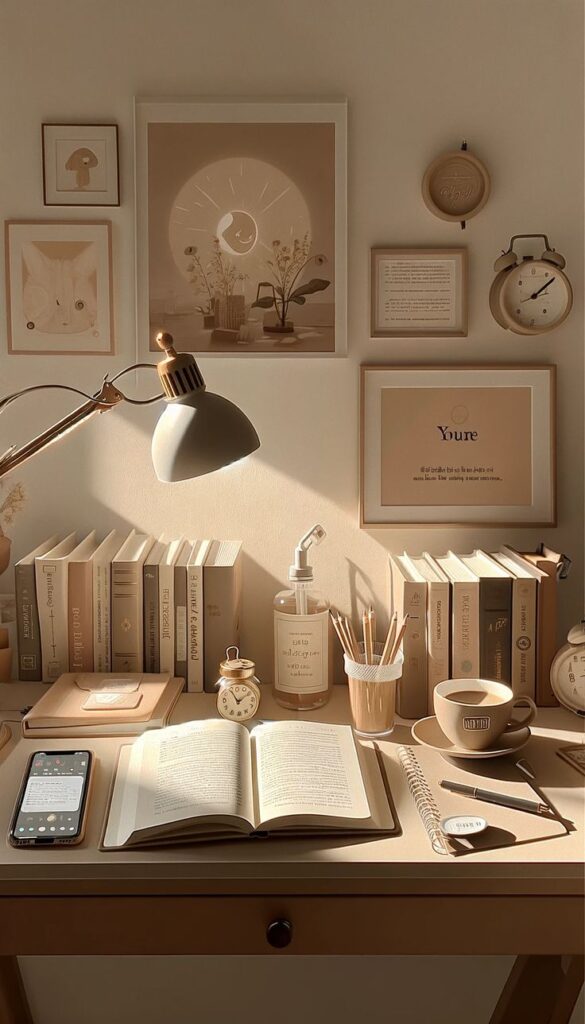
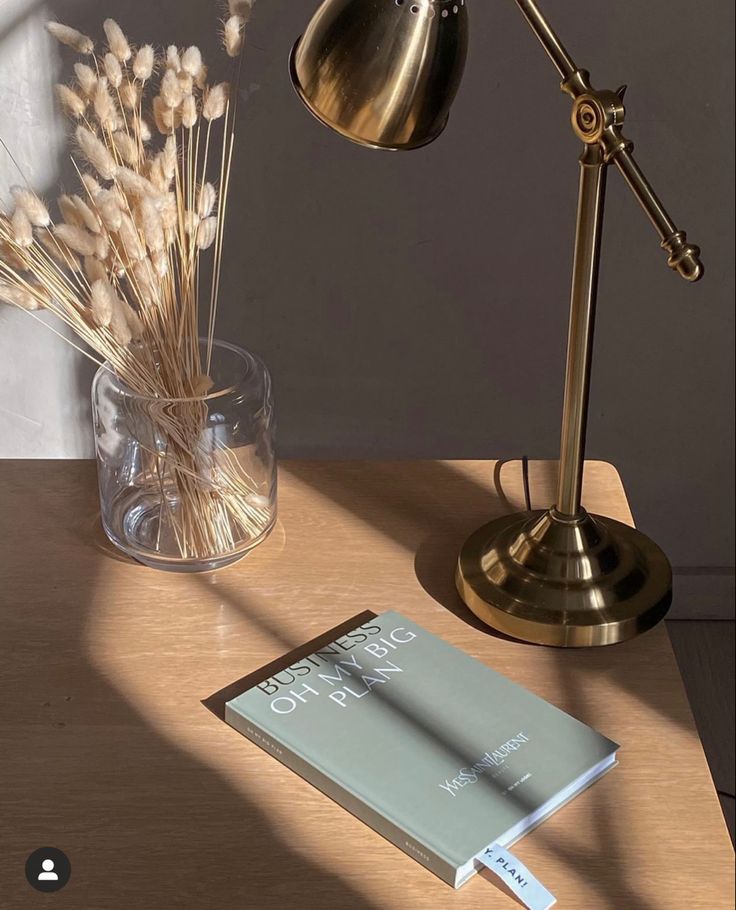
He or she should first decide what the library is mainly for. Will it be a quiet place for focused reading, a spot for studying, or a family gathering area? Knowing this helps choose the right furniture and lighting.
If the library is for reading, a cozy chair and good task lighting are key. For studying or working, a desk and adjustable lighting make sense. If it’s a shared family space, flexible seating and open shelving might work better.
Clear goals keep the design focused. It also helps decide how many books will be displayed versus stored elsewhere, and whether technology like e-readers or computers will fit in.
Selecting the Best Location
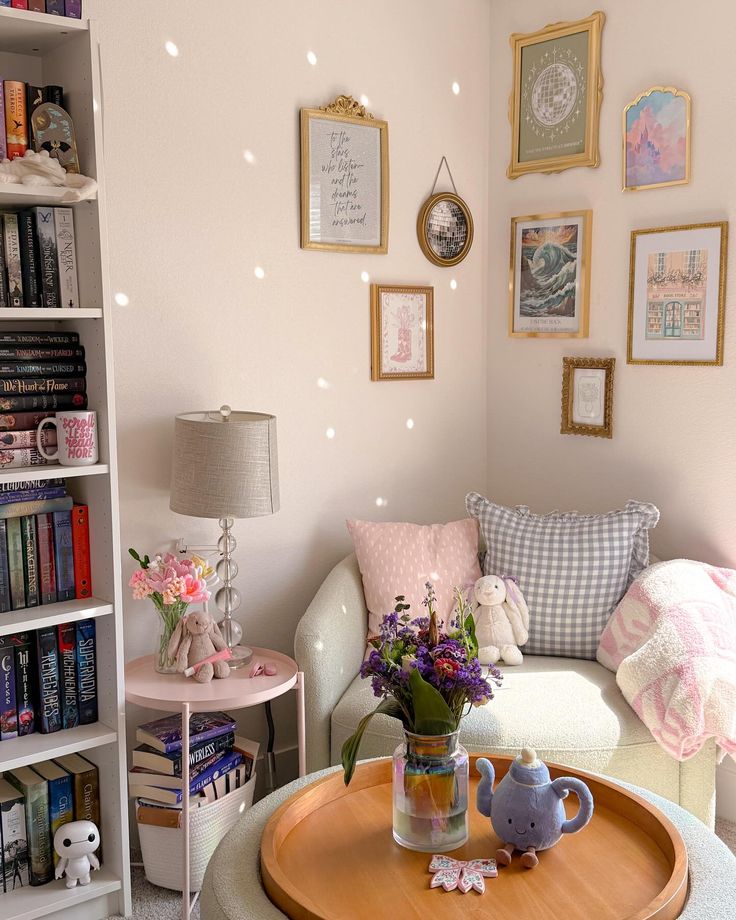
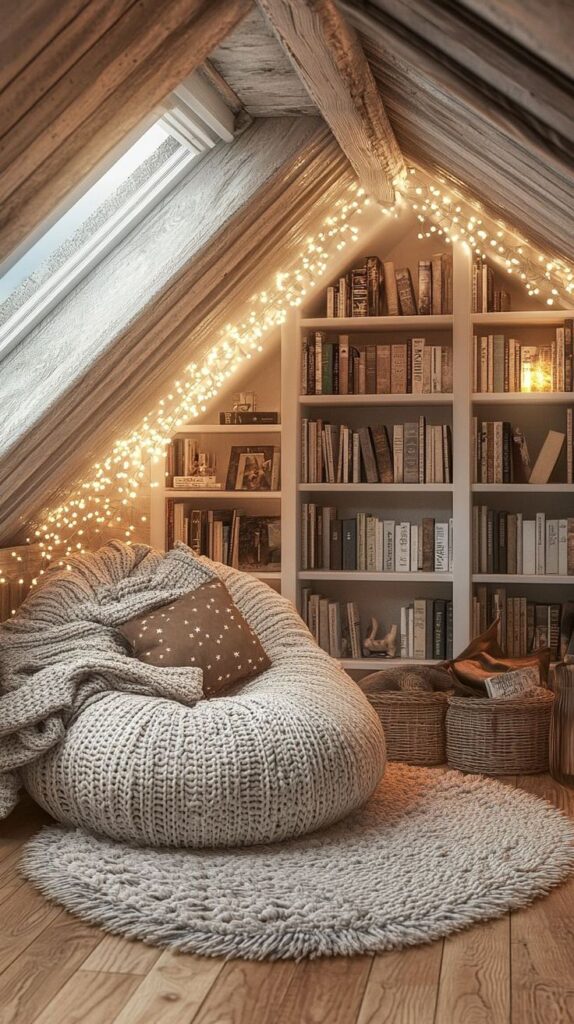
Location depends on how the library will be used most. A quiet corner or separate room works well for serious reading. He or she should avoid busy or noisy areas of the house.
Natural light is a bonus but not always necessary. Soft, adjustable lighting can do the job if windows aren’t available. Nearness to electrical outlets is useful for lamps or devices.
The spot should also match the size of the collection. A large room suits bigger book collections, while a small nook keeps things cozy but limits space.
Maximizing Space and Layout
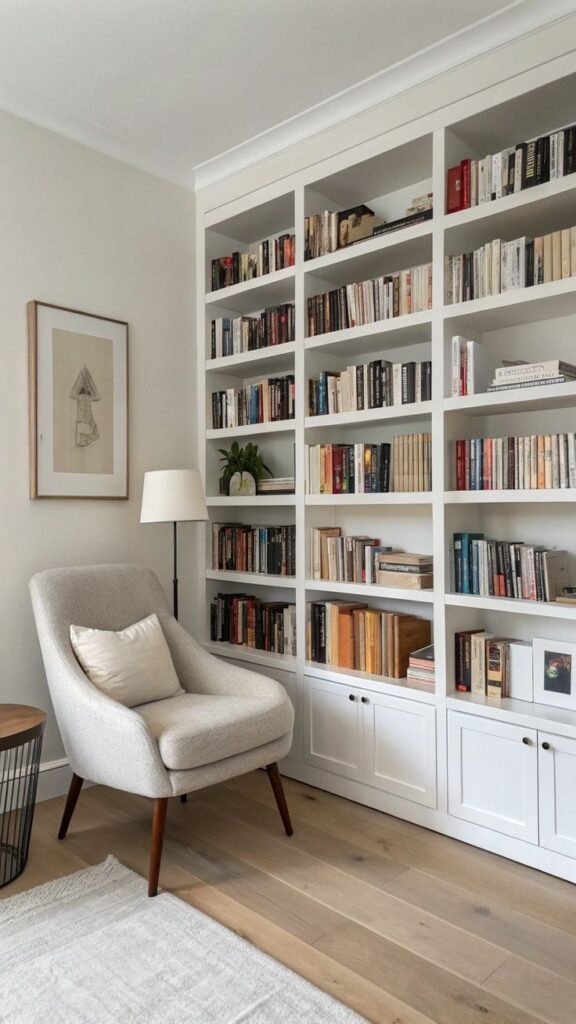
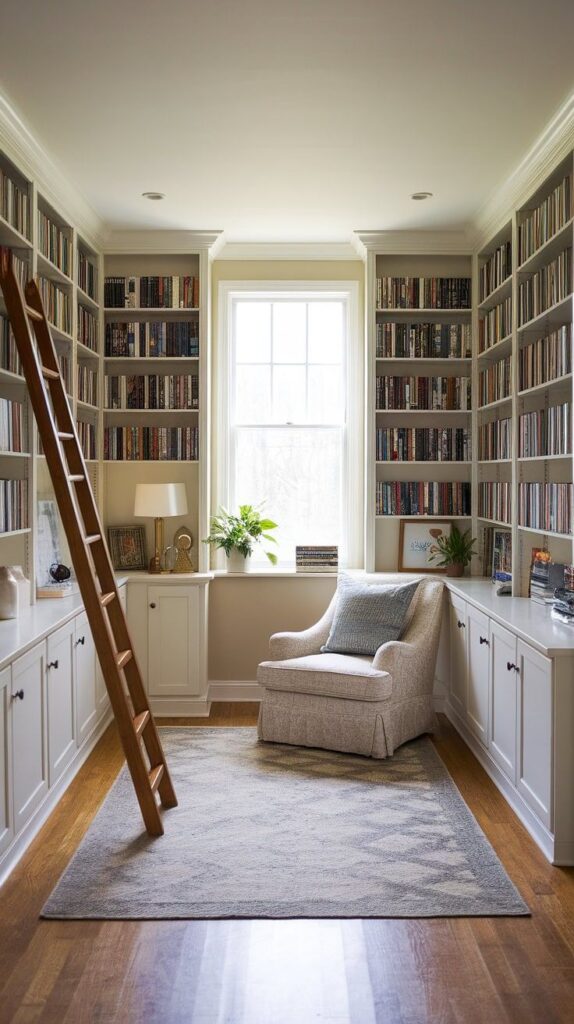
Smart use of space keeps the library neat and inviting. He or she should consider vertical storage like tall bookcases or floating shelves to save floor space.
A defining feature is comfortable seating placed with easy access to books. Adding a small table for notes, glasses, or drinks enhances comfort.
Using area rugs can mark the reading zone and add warmth. Good flow between seating and shelves makes browsing simple.
Tips for layout:
- Use corner shelves for tight spaces
- Mix open and closed storage to reduce clutter
- Position lighting near seating and shelves for reading ease
This balance of storage, seating, and lighting creates a practical and pleasant environment.
Design Secrets for Aesthetic Appeal
A visually pleasing home library balances style and comfort while showing personality. Key elements include smart bookshelf choices, thoughtful use of color and texture, and adding meaningful artwork or personal items. These details help create a space that feels inviting and reflects the owner’s tastes.
Choosing the Right Bookshelves
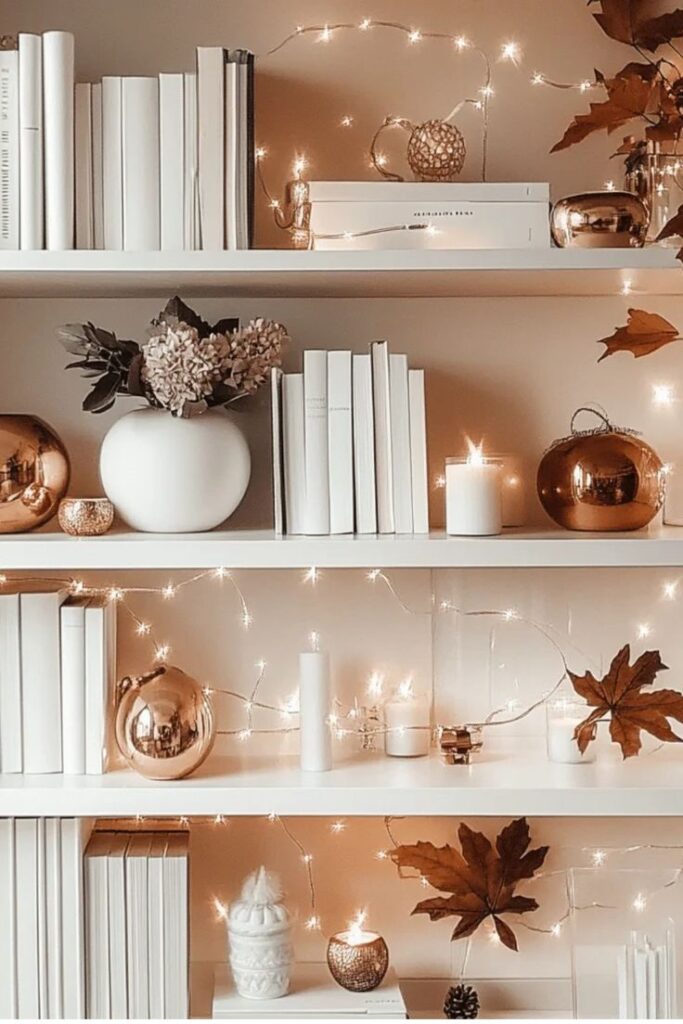
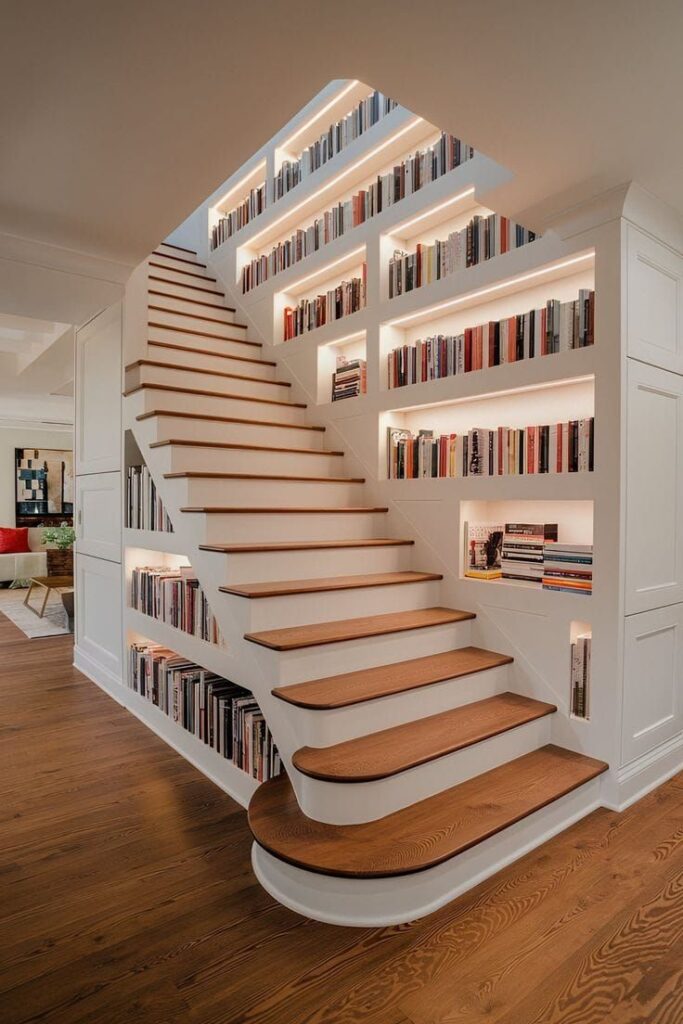
Bookshelves set the tone in a home library. Built-in shelves offer a clean, integrated look and make good use of small spaces. Freestanding shelves are flexible and come in many styles, from rustic wood to sleek metal.
Consider shelf height and depth to fit different book sizes. Adjustable shelves add versatility. A popular idea is using the space under stairs for built-in bookshelves, which saves room and adds charm.
Glass shelves can give a modern, airy feel, especially when paired with metal accents. Whichever type is chosen, durability and easy access to books are key.
Styling With Color and Texture
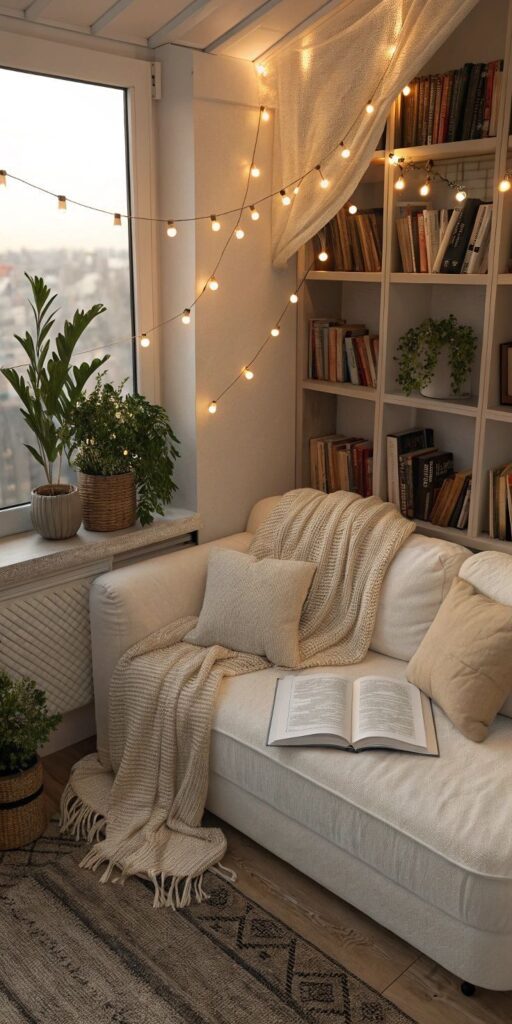
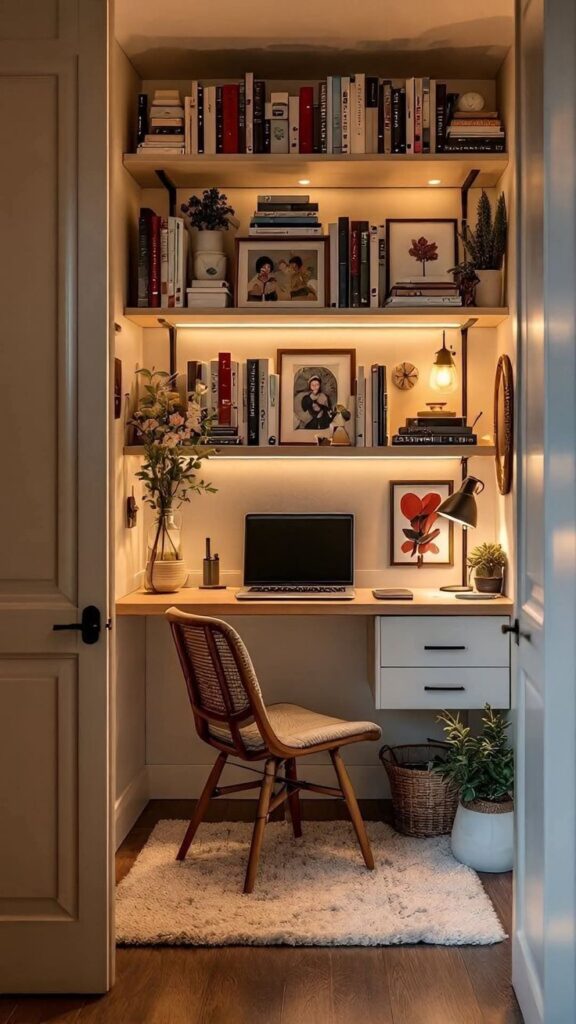
Color and texture influence the library’s mood. Warm wood tones add coziness and a timeless feel. Painting shelves or walls in soft neutrals or deep hues like navy can create a calm, focused atmosphere.
Mixing textures adds interest. For example, pair smooth shelves with a wool rug or a leather chair. A touch of greenery brings life and freshens the space, breaking up monotony.
Lighting also plays a role. Soft, warm lighting highlights texture and makes the room more inviting without glare.
Integrating Artwork and Personal Touches
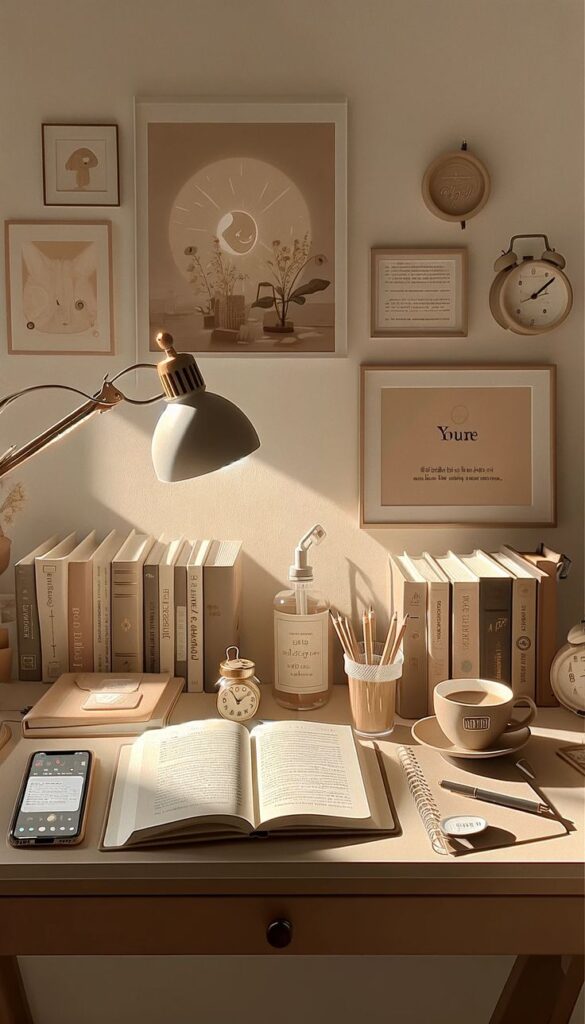
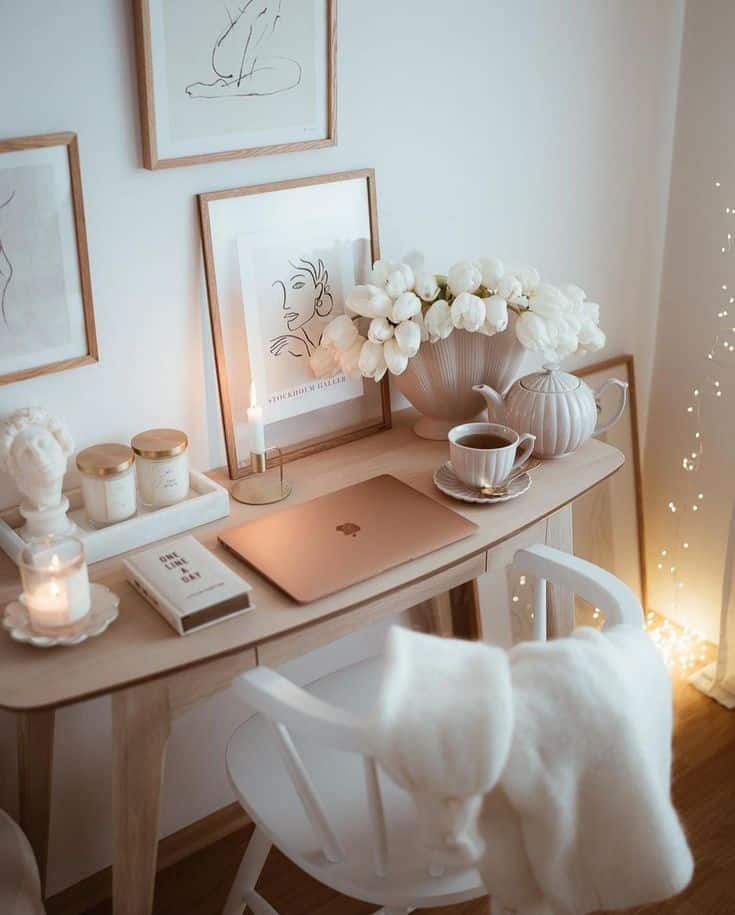
Artwork brings personality to the library. Framed prints, photos, or book-related posters add visual appeal and create conversation points. Position art at eye level for easy viewing.
Personal touches like souvenirs, vintage bookends, or a favorite sculpture give the room character. These details reflect personal stories and make the library unique.
Adding a cozy reading spot with cushions or throws makes the space feel welcoming. Balance the display with enough open space so it doesn’t feel cluttered.
Functional Features for Everyday Enjoyment
A home library should be both comfortable and practical. It needs well-planned lighting, cozy spots to read, clear book organization, and smart tech use. These elements help make the space easy to use every day.
Lighting for Comfort and Ambience
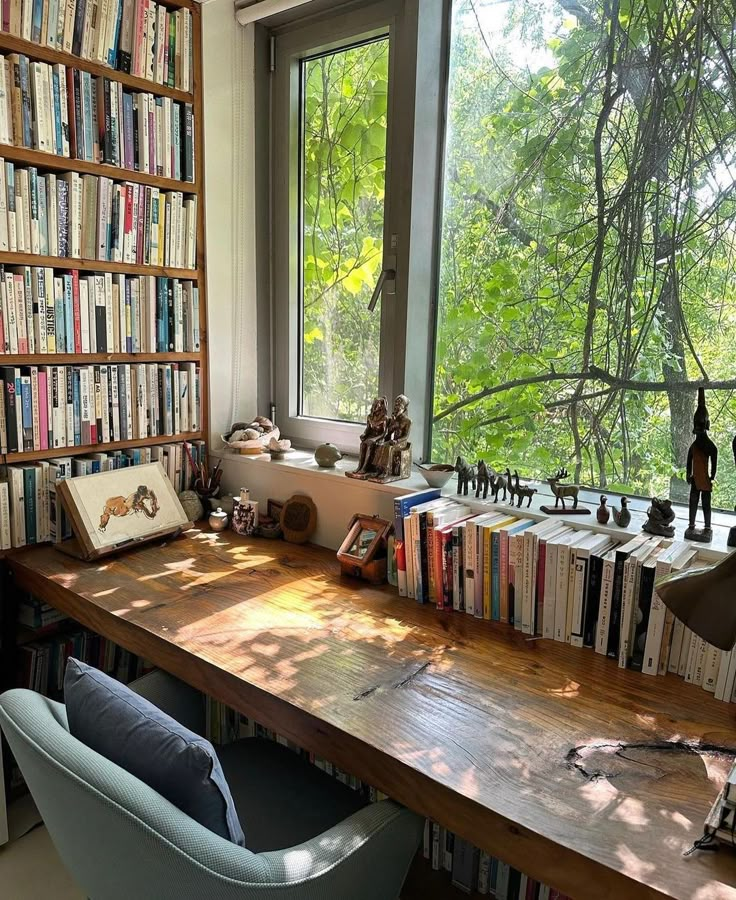
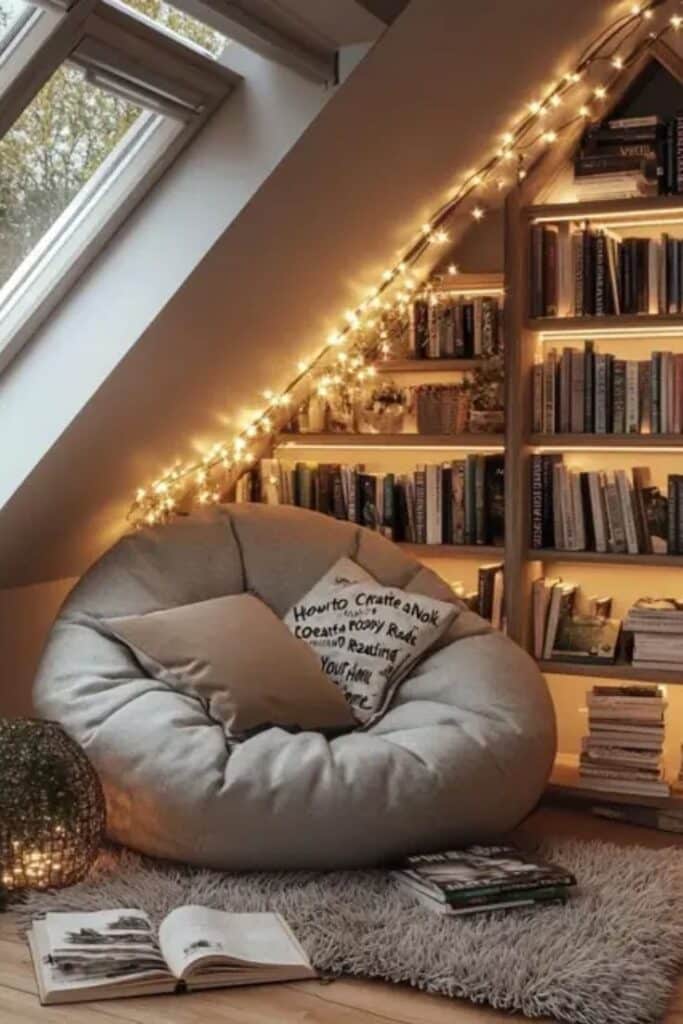
Proper lighting is key in a home library. Natural light is ideal during the day but can cause glare on pages, so adjustable window coverings help control this. For evening reading, task lighting like adjustable desk lamps or wall sconces provide focused light without straining eyes.
Warm light bulbs create a cozy feel, while cooler bulbs can boost focus. Combining different light sources allows flexible settings for various activities—reading, working, or relaxing. Dimmers and layered lighting add control and comfort.
Creating Inviting Reading Nooks
Reading nooks make the library feel personal and welcoming. A small corner or window seat with comfortable cushions encourages longer stays. Soft throws and pillows increase comfort.
Good seating is essential. Chairs with back support or an armchair paired with a footstool work well. Adding a small side table for drinks or notes improves convenience. The nook should stay quiet and free from distractions.
Organizing and Cataloging Your Collection
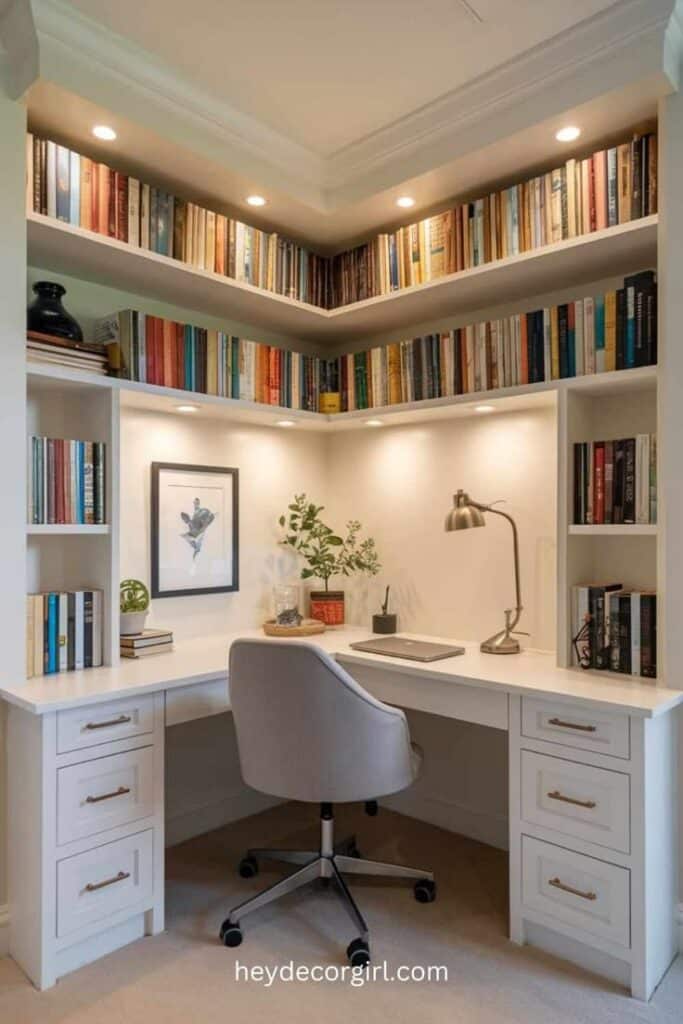
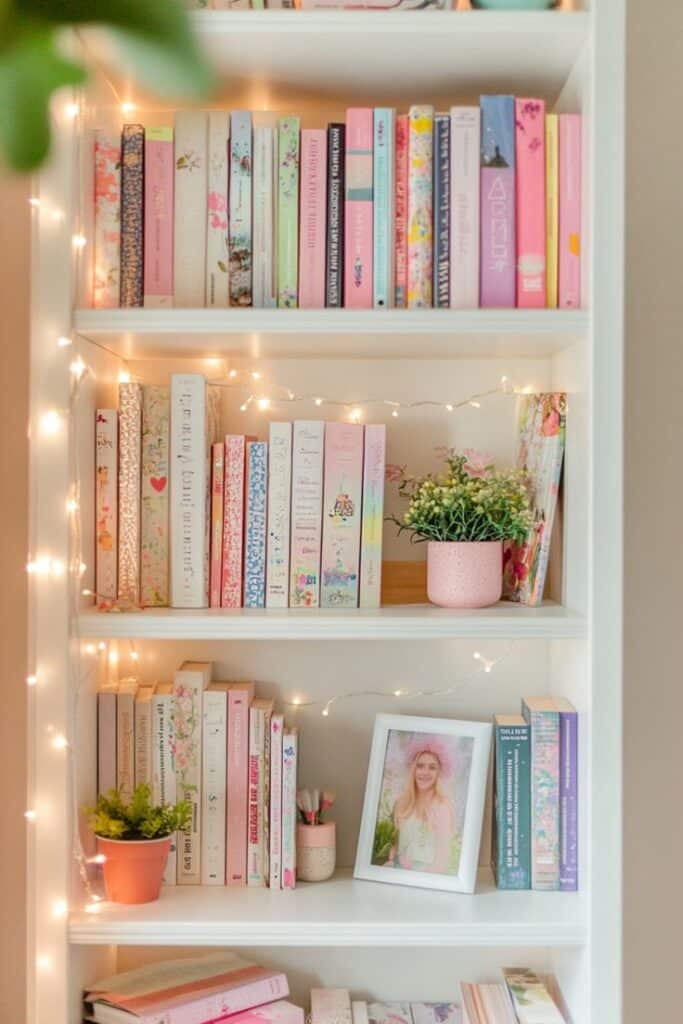
An organized library saves time and keeps the space neat. Bookshelves arranged by genre, author, or color can make finding books easier. Labels or simple cataloging systems help keep track of the collection.
Using vertical space with floor-to-ceiling shelves increases storage without crowding. Adding baskets or bins for magazines or small items reduces clutter. Regularly sorting and donating unread books keeps the library fresh.
Incorporating Technology Thoughtfully
Technology can improve the library without overwhelming it. E-readers and tablets provide digital reading options but should have a dedicated charging station to avoid mess.
Sound systems or headphones enable listening to audiobooks quietly. Digital catalogs or apps can track books or suggest reads. However, screens should stay off to keep the room relaxing and focused on physical books.
- 205shares
- Facebook0
- Pinterest205
- Twitter0
